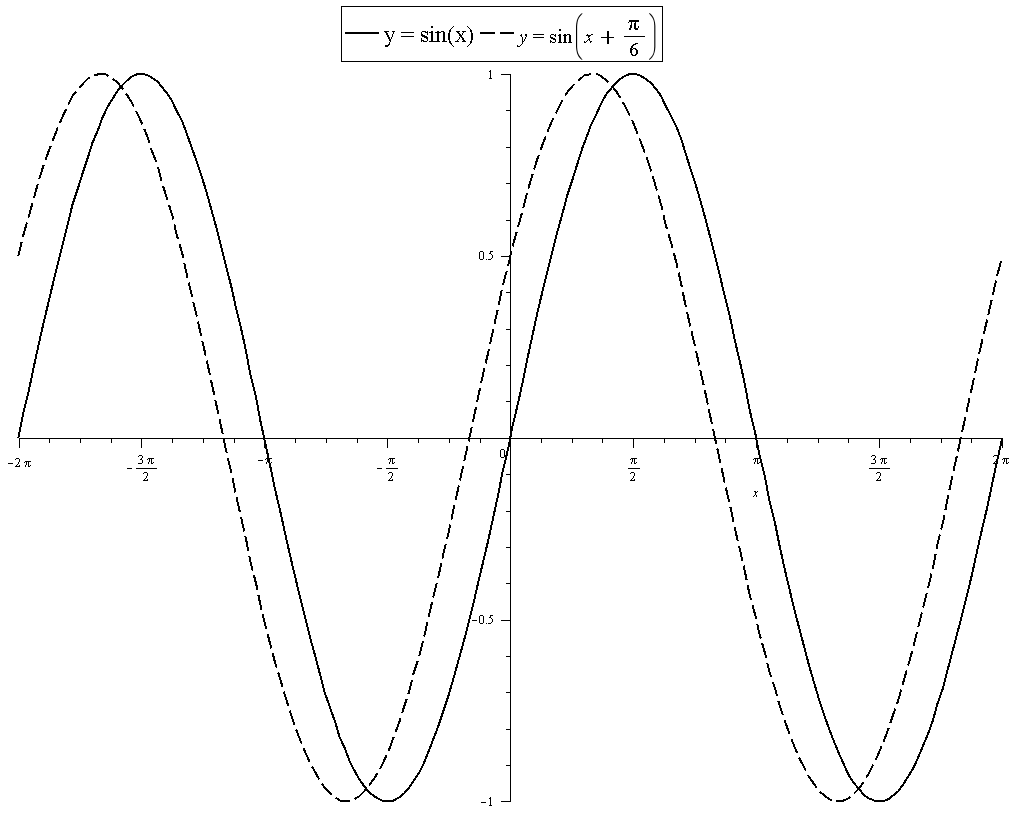How do you use transformation to graph the sin function and determine the amplitude and period of #y=sin(x+pi/6)#?
1 Answer
Dec 3, 2017
See below.
Explanation:
If we look at a trig function in the form:
Amplitude is
Period is
Phase shift is
Vertical shift is
From:
We can see amplitude is 1. This is the same as for
The period is:
Phase shift is:
From the above, we conclude that the graph of
Graph of


